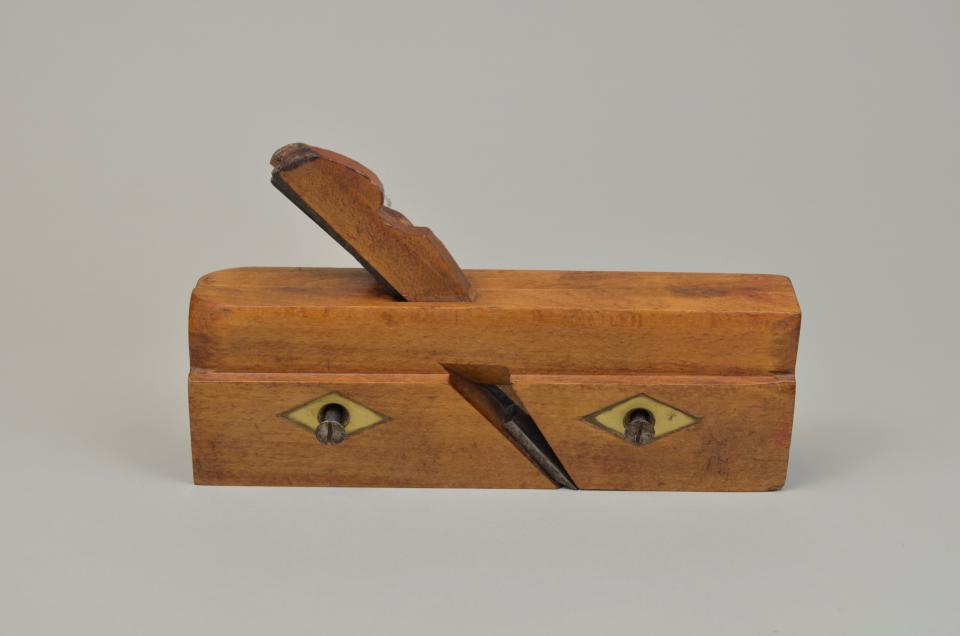
Length 24.3cm x Width 5.7cm x Height 14.9cm
a- Length 24.3cm x Width 2.5cm x Height 7.9cm
b- Length 24.3cm x Width 3.3cm x Height 8.9cm
c- Length 16.4cm x Width 2.5cm x Height 0.8cm
d- Length 18.5cm x Width 2.1cm x Height 0.5cm
e- Length 16.5cm x Width 2.4cm x Height 0.8cm
f- Length 18.4cm x Width 2.4cm x Height 0.5cm
A wooden sash fillister plane comprised of six parts, two halves of a plane held together by two screws that allow the two parts to move apart and back together (a) & (b), a wooden wedge with a rounded top and a tapered point (c), an iron with a flat blade (d), another identical wooden wedge (e), and another iron with a curved blade (f). The two sets of irons and wedges fit together through two angled cutouts in both halves of the plane's bodies, and the wedges hold the irons in place as the plane runs across the wood surface below. Stamped on the toe of the plane is "A.MONTY./***/ROXTON POND.P.Q". Stamped on the heel is "1", "1/2", "239", and "1 3/4".
These sash planes are used to build sash window frames. Two blades work simultaneously on a single workpiece. One, the grooving or rabbet iron, cuts a groove for the glass window pane to sit in. The other, the sash or other molding plane, cuts the decorative profile of the window frame. In some cases, the distance between the cutting irons can be adjusted, so the plane can be used for several different projects.
